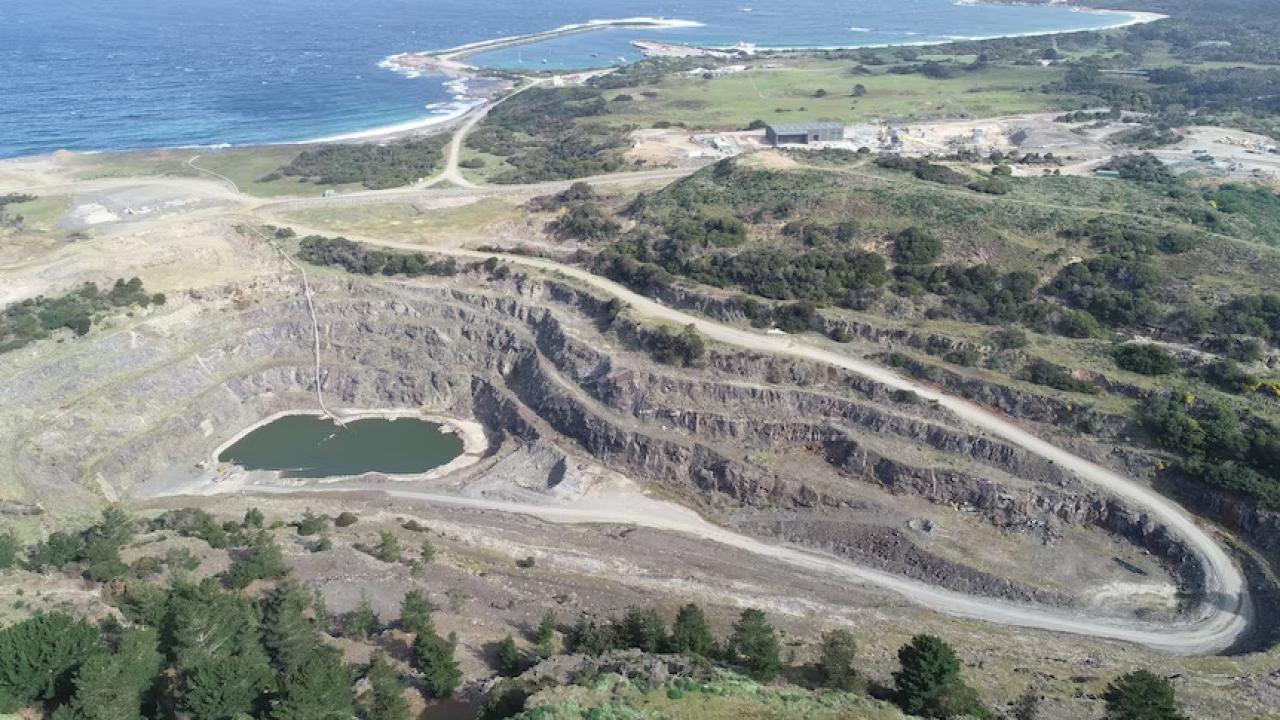King Island tungsten mine facing a stormy future, annual report reveals

GROUP 6 Metals Limited, the company behind the Dolphin Tungsten Mine at Grassy, has reported another difficult year, recording heavy financial losses but outlining a path to recovery following a major recapitalisation deal.
Executive chairman Kevin Pallas was frank in his letter to shareholders in the company’s Annual Report (FY 2025), acknowledging that without the December 2024 rescue plan the company would not have survived: “I thank you for your support over the past 12 months, particular for the rescue plan that was announced in December 2024 and approved at a meeting of shareholders in April 2025.
“This was crucial for the survival of G6M in its current form, and facilitated a recapitalisation of the company that has provided the support and direction required to prevent a very different and unfavourable outcome.”
The recapitalisation included the conversion of more than $81 million in debt into shares, $5.9 million in fresh equity from senior lenders, and the issue of 7.2 billion warrants.
The Tasmanian Government also provided a $7.5 million loan in May 2025, backing the mine as a critical minerals project. Although shareholders overwhelmingly supported the plan, it came at the cost of significant dilution of shareholdings, leaving many with only a fraction of their original stake. The company’s results show it is still a long way from profitability.
For the six months to 30 June 2025, Group 6 Metals reported a net loss of $32.1 million, down from a staggering $133.6 million loss in the same period of 2024, when more than $105 million in impairments were booked. While the latest figures remain deeply negative, they demonstrate a narrowing of losses as the company stabilises following its recapitalisation.
Cash burn remains a concern, with $26.3 million in net operating outflows in FY25.
The Dolphin Tungsten Mine suffered poor production performance and major plant maintenance backlogs during the year. Several components of the processing plant had to be replaced or upgraded.
By June 2025, however, signs of recovery were emerging. The company reported record concentrate production that month, building confidence that upgrades are working.
Stockpiles of ore from the recently completed open-cut phase are now available to feed the plant while plans for underground mining are finalised.
Mr Pallas told shareholders: “Record production in June 2025 certainly provided confidence that we are on a positive trajectory… we expect total production to increase month on-month over the next several periods.”
Global tungsten prices have strengthened, rising around 29 per cent over the year to June 2025, driven by supply restrictions from China.
By October 2025, prices had climbed further to US$580 per mtu, the price underpinning the company’s largest sales contracts.
This stronger market has given the company hope of reaching cashflow-positive operations in the coming months, provided production continues to improve.
Despite optimism, the Annual Report makes clear that serious risks remain:
- Suspended shares – G6M remains suspended from trading on the ASX after failing to lodge its FY24 annual report on time. Shareholders currently cannot trade their stock.
- Dilution pain – The recapitalisation left many long-term shareholders with only a tiny fraction of their original holdings.
- Going concern warning – Directors admit the company’s survival depends on achieving steady-state production and positive cashflow. Forecasts assume throughput of 24,000 tonnes per month, 55 per cent recovery, and tungsten prices of at least US$550 per mtu. The auditors echoed this, warning of “material uncertainty” about G6M’s ability to continue if assumptions are not met.
- Future funding risk – If production falls short, the company may need fresh financing in FY26, with no guarantee of success.
- Governance gaps – The company has no standalone audit committee, had no anti-bribery policy in FY25, and has no female directors.
- Environmental and regulatory pressure – Future compliance costs, such as carbon schemes, could add to financial strain.
- Community risk – The mine supports King Island jobs and businesses. Any operational setbacks could flow directly into the local economy.
Mr Pallas paid tribute to the workers, customers, and the King Island community: “Our management and staff have made outstanding contributions during a turbulent time for the business, which is to be commended… Importantly, the people of King Island and the Government of Tasmania are to be thanked for their support in this project, which will no doubt bring long-term benefit to the community, the state, and Australia.”
The company’s immediate focus is achieving steady, profitable operations and moving into the underground mining phase, which should deliver higher-grade ore.
At the same time, directors acknowledge ongoing risks - from financing pressures and fluctuating tungsten prices to technical and environmental challenges.
Despite the turbulence, Pallas struck an optimistic note: “We are now gaining greater confidence in the company’s prospects and performance improvement, whilst we progress the journey towards long-term stability and re-instatement of the company’s shares on the ASX trading platform.”




Add new comment